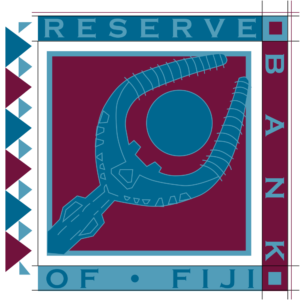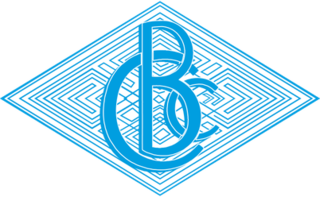
The Bank of Uganda is the central bank of Uganda. Established in 1966, by Act of Parliament, the bank is wholly owned by the government but is not a government department.

The Bank of Tanzania is the central bank of the United Republic of Tanzania. It is responsible for issuing the national currency, the Tanzanian shilling.
The National Bank of Ethiopia is the central bank of Ethiopia. Its headquarters are in the capital city of Addis Ababa. Mamo Mihretu is the current governor of the bank.

The Reserve Bank of Fiji is the central bank of the Pacific island country of Fiji. Its responsibilities include the issue of currency, control of the money supply, currency exchange, monetary stability, promotion of sound finances, and fostering economic development.

The Reserve Bank of Malawi is the central bank of Malawi established in the year 1964 located in Lilongwe. The current governor is Wilson Banda.

The Central Bank of Paraguay is Paraguay's highest monetary authority, and the country's governing body, in finances and economics. Its headquarters are in Asunción's Carmelitas neighbourhood.

The Central Bank of the Congo is the central bank of the Democratic Republic of the Congo. The bank's main offices are on Boulevard Colonel Tshatshi in La Gombe in Kinshasa.

The Bank of the Republic of Haiti is the central bank of Haiti. It was formed in 1979 from the National Bank of the Republic of Haiti, which had served as the country's bank of issue since 1910, itself succeeding the National Bank of Haiti.

The Bank of Ghana is the Central Bank of Ghana. It is located in Accra and was formed in 1957. The Bank of Ghana has Seven Regional Offices in addition to its head office in Accra. The regional offices are located in the following cities, Hohoe, Kumasi, Sunyani, Tamale, Takoradi, Bolgatanga, Wa. The regional offices are responsible for implementing the policies and directives of the Bank of Ghana in their respective regions. They also provide banking services to the government, financial institutions, and the public.

The Bank of Zambia (BoZ), is the central bank of Zambia.

The National Bank of Rwanda is the central bank of Rwanda. The bank was founded in 1964. The current governor of the bank is John Rwangombwa.

The Bank of the Republic of Burundi is the central bank of Burundi. The bank was established in 1966 and its offices are in Bujumbura.
The Bank of Papua New Guinea is the central bank of Papua New Guinea, which has a core mandate to ensure price stability and maintain macroeconomic growth. To achieve this, it discharges four main functions; 1. responsible for the formulation and implementation of monetary policy, 2. ensure financial system development and stability, 3. ensure the payment system remain efficient, and 4. provide a banking role to the Government. It also manages the country's foreign reserves, issue the country's currency, manages the gold and foreign exchange of Papua New Guinea.

The Central Reserve Bank of El Salvador is the central bank of El Salvador, which controls the currency rate and regulates certain economic activities within El Salvador. The bank was originally privately owned, but was brought under state control through The Law on the Reorganization of Central Banking.

The Central Bank of Samoa, situated in the capital Apia beside the main government buildings, issues the Samoan currency, the Samoan tālā as well as regulates and manages the exchange rate with foreign currencies. In its role as the central bank for the government and the country, it is also responsible for the registration and supervision of commercial banks. The current governor since 2011 has been Maiava Atalina Emma Ainuu-Enari.

The National Bank of the Republic of Belarus is the central bank of Belarus, located in Minsk. The bank was created in 1922 under the name of "Belarusian Republican Bank" by the Soviet of People's Commissars of Byelorussia, but soon worked under the direction of the State Bank of the USSR. Undergoing reorganizations in 1959 and 1987, the bank appeared in its current form in 1990 after the passage of banking rules upon declaring independence from the Soviet Union.

The Maya Declaration is a global initiative for responsible and sustainable financial inclusion issued by the Alliance for Financial Inclusion that aims to reduce poverty and ensure financial stability for the benefit of all. It is the first global and measurable set of financial inclusion commitments by developing and emerging economies.
The Global Policy Forum (GPF) is organized by the Alliance for Financial Inclusion, or AFI, as the keystone event for its membership and financial inclusion policymakers worldwide. Each year, it is co-hosted by a different member institution in a different region of the world. As of November 2023, AFI had 86 member institutions from over 80 countries, making the AFI GPF the most important and comprehensive forum for regulatory institutions with an interest in promoting financial inclusion policy. The AFI GPF is focused on developing and improving national financial inclusion strategies and policies and is used as a platform for senior financial regulators to exchange ideas as well as engage in peer-to-peer learning activities.

The Alliance for Financial Inclusion (AFI) is a policy leadership alliance owned and led by member central banks and financial regulatory in developing countries with the objective of advancing financial inclusion.

Sierra Leone Ministry of Finance is a ministerial department of the Government of Sierra Leone, and is in charge of managing the revenue and finances of the Sierra Leone government. The ministry implements the economic policies and is responsible for public financial management. The ministry advises the President of Sierra Leone on economic issues. The headquarters of the Sierra Leone Ministry Of Finance is located on George Street in Freetown, Sierra Leone.


















